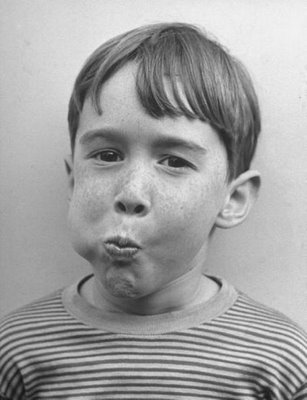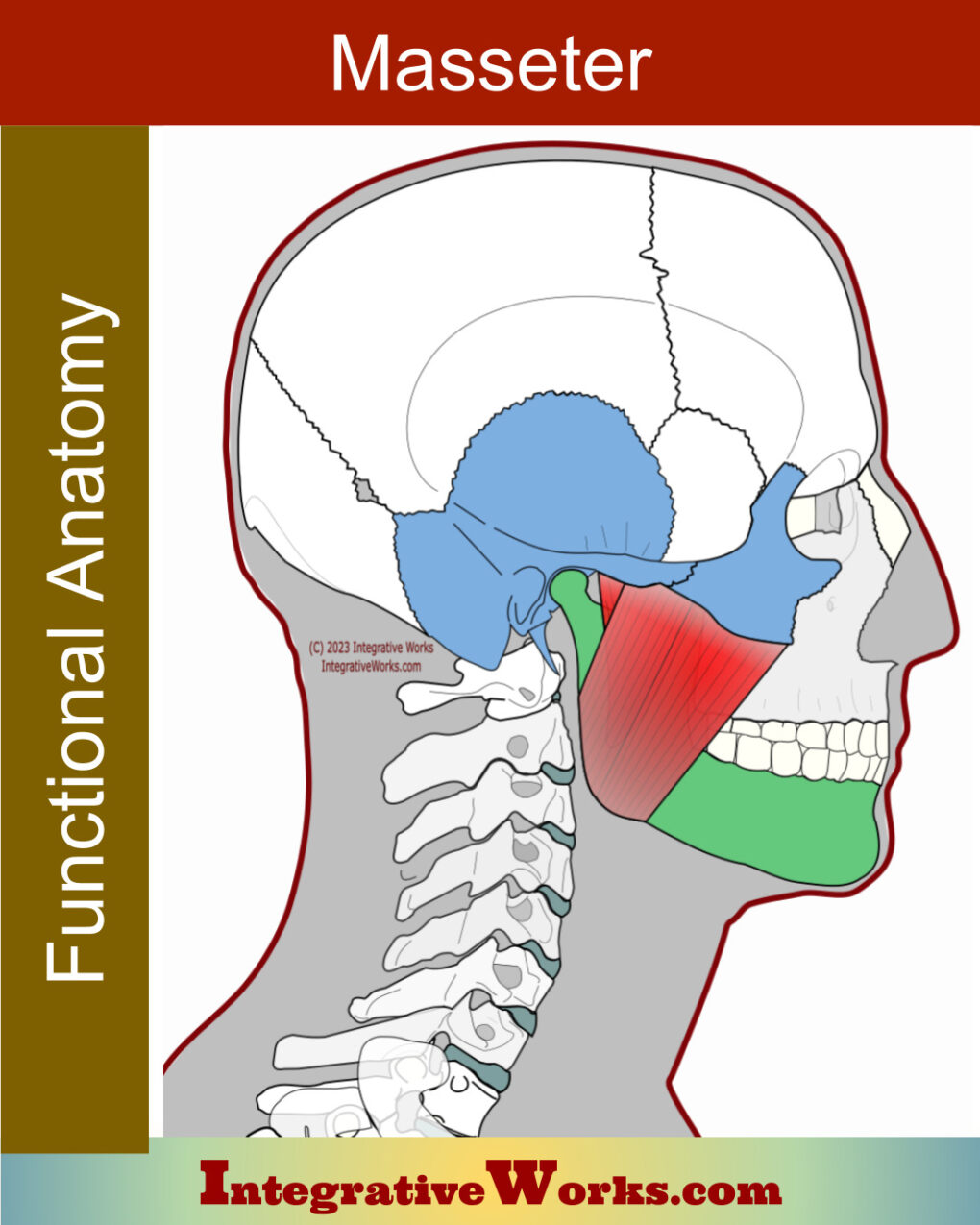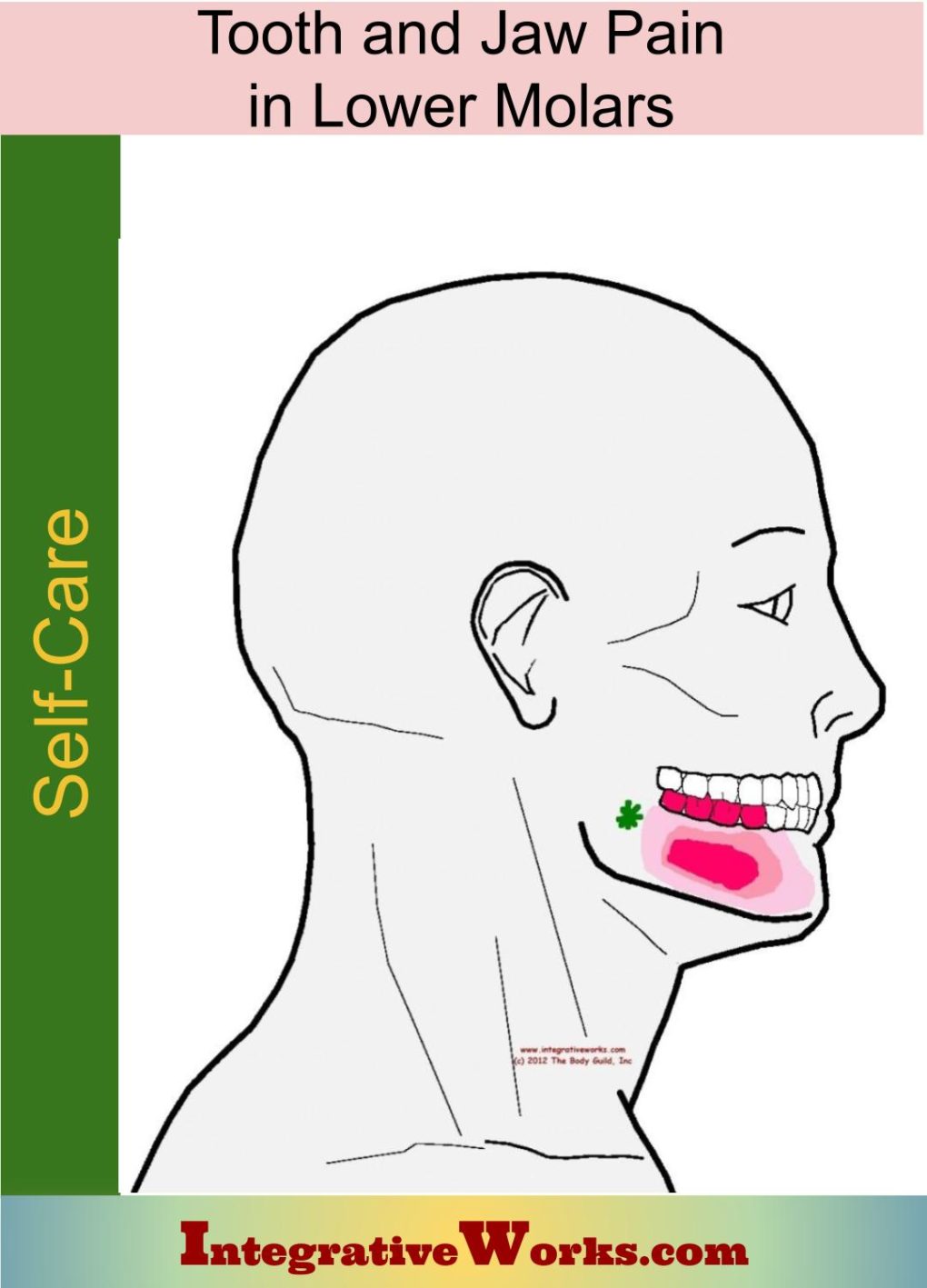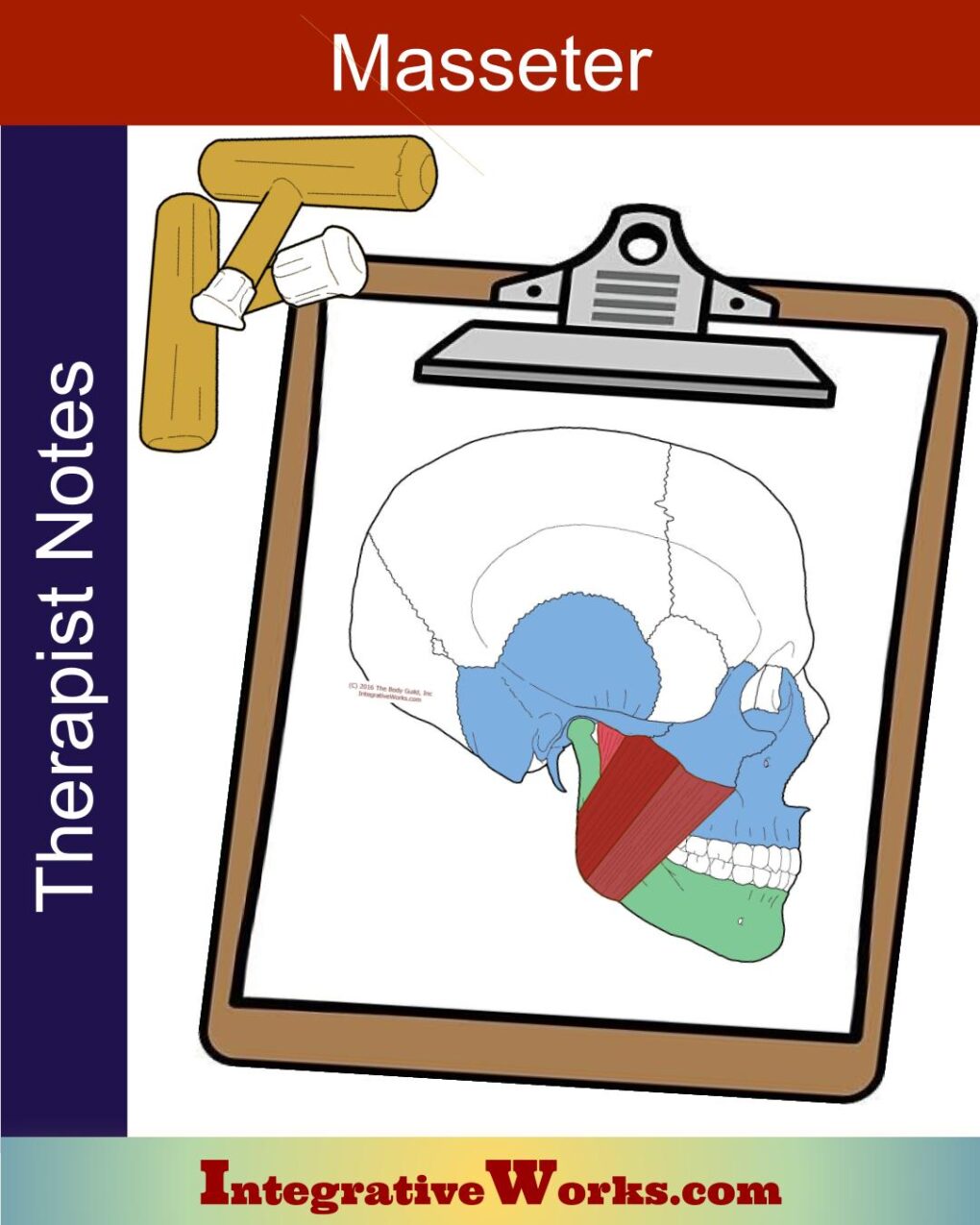Table of Contents
- How People Describe This Pain Pattern
- How You Activate and Intensify This Pain Pattern
- Self-Care – Getting Relief on Your Own
- Musculoskeletal Anatomy Behind Your Pain
- Therapy Notes for Massage and Bodywork
How People Describe This Pain Pattern

People complain of toothache and pain in their lower molars teeth that seem to extend down into the roots. There is usually one tooth where the pain is more focused. They typically come to see me after trying to get relief from their dentist without success. Mostly, these are regular clients of mine who understand how bodywork impacts the health of their teeth. Fortunately, this problem is relatively straightforward and consistently gets rid of that irritation in a back tooth.
Typically, this pattern occurs as a feeling of infection and sensitivity in the lower molars and bicuspids. Like its counterpart, in the upper belly of the masseter, this referral creates that yucky, infected toothache feeling into the tooth’s root. The trigger points are in the superficial masseter in the middle of the muscle belly, making the whole area sore.
How You Activate and Intensify This Pain Pattern

Awkward Dental Work
When I see tooth pain from trigger points, it is because of the posturing and pressure created by the dental procedure. Sometimes it results from more laborious chewing of foods like taffy or bubble gum. Also, uneven chewing or chewing on things like toothpicks and popcorn kernels activates these trigger points. Additionally, problems in nearby joints or fragile teeth perpetuate this pattern with changes in the chewing pattern.
Chewing and Clenching
In my experience, most tooth pain comes from trigger point referrals. When sharp pain occurs as something hot/cold hits the tooth, that’s usually pain from an exposed nerve and needs prompt dental care. Mostly, other toothaches seem associated with trigger point referrals. Still, even when trigger point work relieves the pain, see your dentist. Make sure that there is not an underlying tooth problem.
Ture Story
Personally, I’ve had this particular tooth pain that I relieved with trigger point work but needed dental care. It came from clenching during workouts and chewing up toothpicks.
The Musculoskeletal Anatomy Behind Your Pain
Musculoskeletal Anatomy
This post on anatomy contains standard information about the origin, insertion, function, and innervation of muscles. Additionally, it includes information on functional considerations and anomalies.
Find Related Posts
Anatomy posts have a grid of all related posts. This includes posts on pain patterns, self-care, therapy notes, NMT protocols, cranial techniques, and cases.
Getting Relief on Your Own
Clinically Proven
Self-Care Strategies
This post on anatomy contains standard information about the origin, insertion, function, and innervation of muscles. Additionally, it includes information on functional considerations and anomalies.
Find Related Posts
Anatomy posts have a grid of all related posts. This includes posts on pain patterns, self-care, therapy notes, NMT protocols, cranial techniques, and cases.
Therapy Notes for Massage and Bodywork
Better Bodywork
Through Shared Expertise
Therapy Notes provide details for cranial, spinal, and local joint work. These notes also link to a traditional neuromuscular protocol.
By treating integrative components first, direct work on the muscle becomes less intense while providing longer-lasting relief.
Support Integrative Works to
stay independent
and produce great content.
You can subscribe to our community on Patreon. You will get links to free content and access to exclusive content not seen on this site. In addition, we will be posting anatomy illustrations, treatment notes, and sections from our manuals not found on this site. Thank you so much for being so supportive.
Cranio Cradle Cup
This mug has classic, colorful illustrations of the craniosacral system and vault hold #3. It makes a great gift and conversation piece.
Tony Preston has a practice in Atlanta, Georgia, where he sees clients. He has written materials and instructed classes since the mid-90s. This includes anatomy, trigger points, cranial, and neuromuscular.
Question? Comment? Typo?
integrativeworks@gmail.com
Interested in a session with Tony?
Call 404-226-1363
Follow us on Instagram

*This site is undergoing significant changes. We are reformatting and expanding the posts to make them easier to read. The result will also be more accessible and include more patterns with better self-care. Meanwhile, there may be formatting, content presentation, and readability inconsistencies. Until we get older posts updated, please excuse our mess.




